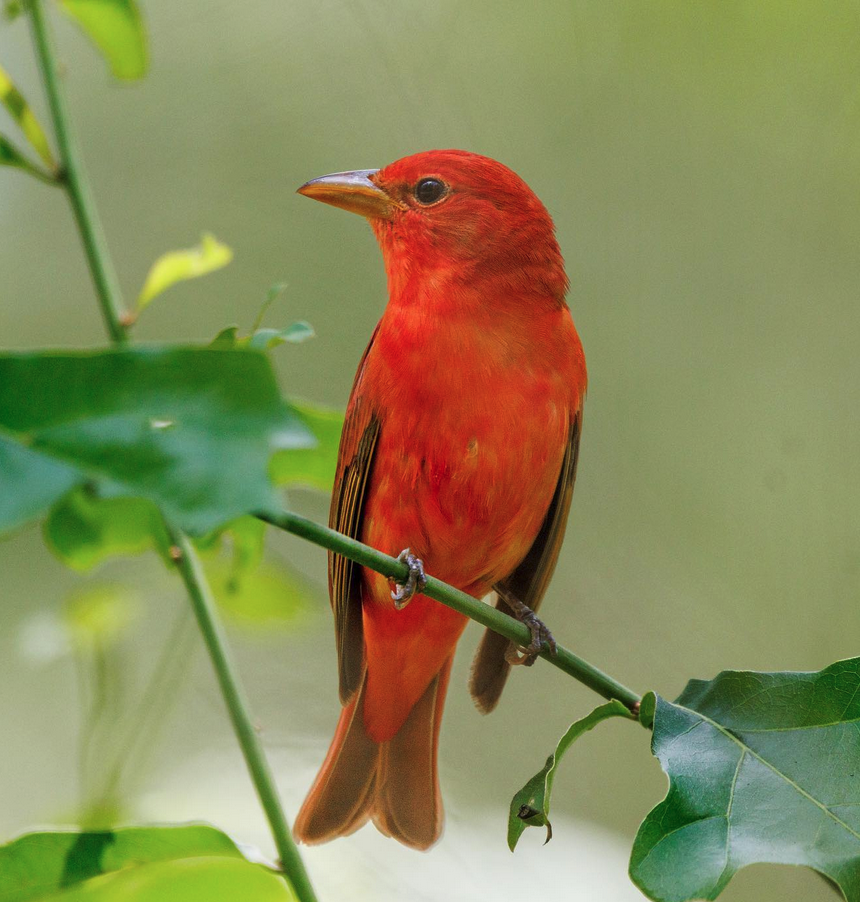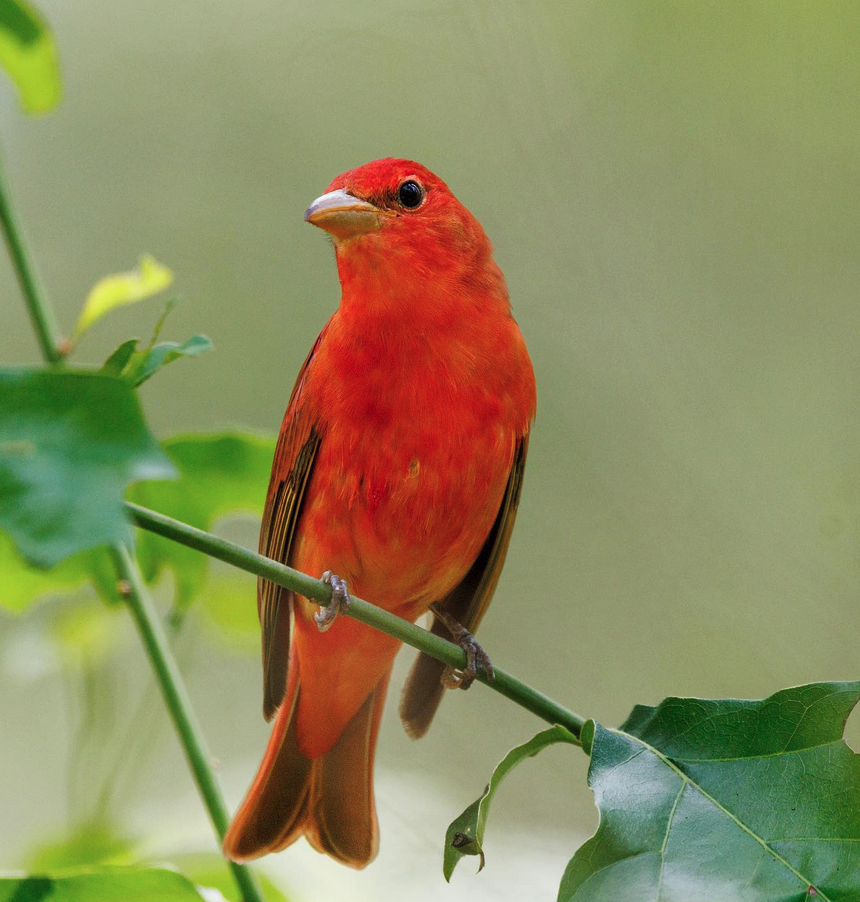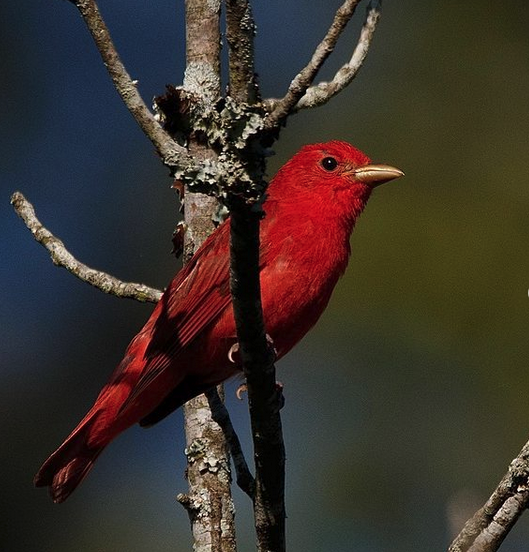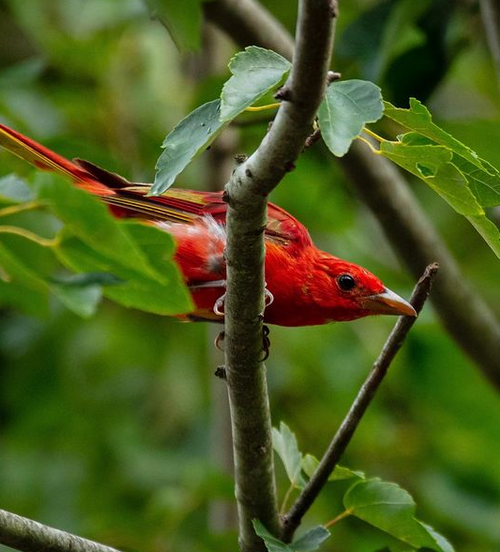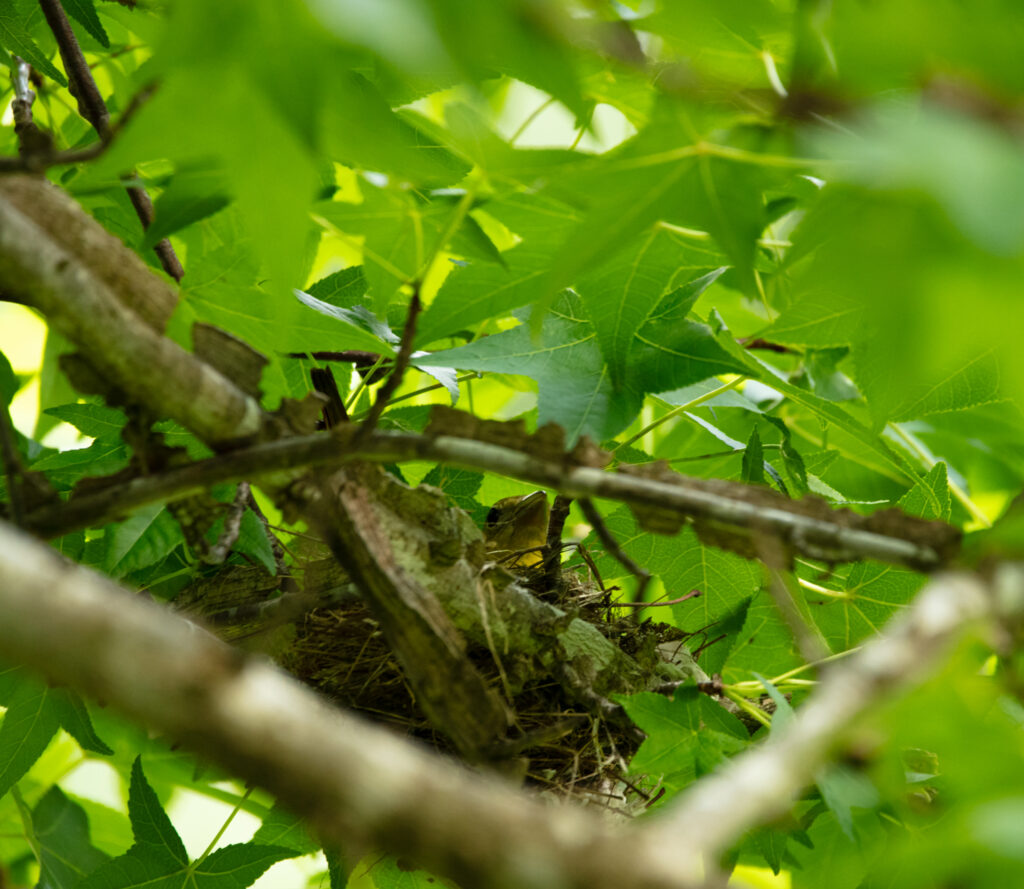By Sally Siko
Happy to spot another first of the year bird, a Summer Tanager!
I found this handsome fella while birding at Cape Fear Shiners Park in Lillington NC. I’d heard his clucking call coming from the tree line along the ball fields and was stoked to catch a good look along with a few photos from such a close range!
Usually these guys tend to stick around in the upper canopy of the trees so to see one at nearly eye level was a real thrill.

The Summer Tanager is the only bird in the western hemisphere boasting entirely red plumage from head to tail.
But where does this bright red plumage come from?
It’s all about the carotenoids.
These carotenoid compounds produce the red colors of birds and are acquired through their diet, and then processed in the body into pigments that are deposited in the growing feathers.
If a bird has a shortage of carotenoids, from poor diet or poor health, its feathers won’t develop their full color or can produce yellow or orange colorations instead of that vibrant red hue.



Summer Tanagers breed across the state of North Carolina yet are not found in the higher elevations of the Blue Ridge Mountains.
There are most commonly found in the southeastern part of the state preferring mixed deciduous forest and stands of long leaf pines.
They can also be found nesting in residential areas in suburban neighborhoods, which is pretty cool since they show up in backyards more often than their cousin the Scarlet Tanager.
Look for them from now through early October.
By the way, I’ve added more than 80 new birding tour dates to my Best Life Birding trip schedule.
Check out the calendar below and book your next birding adventure with me today!
Photos by @sally_siko of @bestlife_birding on my mighty mirrorless monster, the @canonusa #R5














